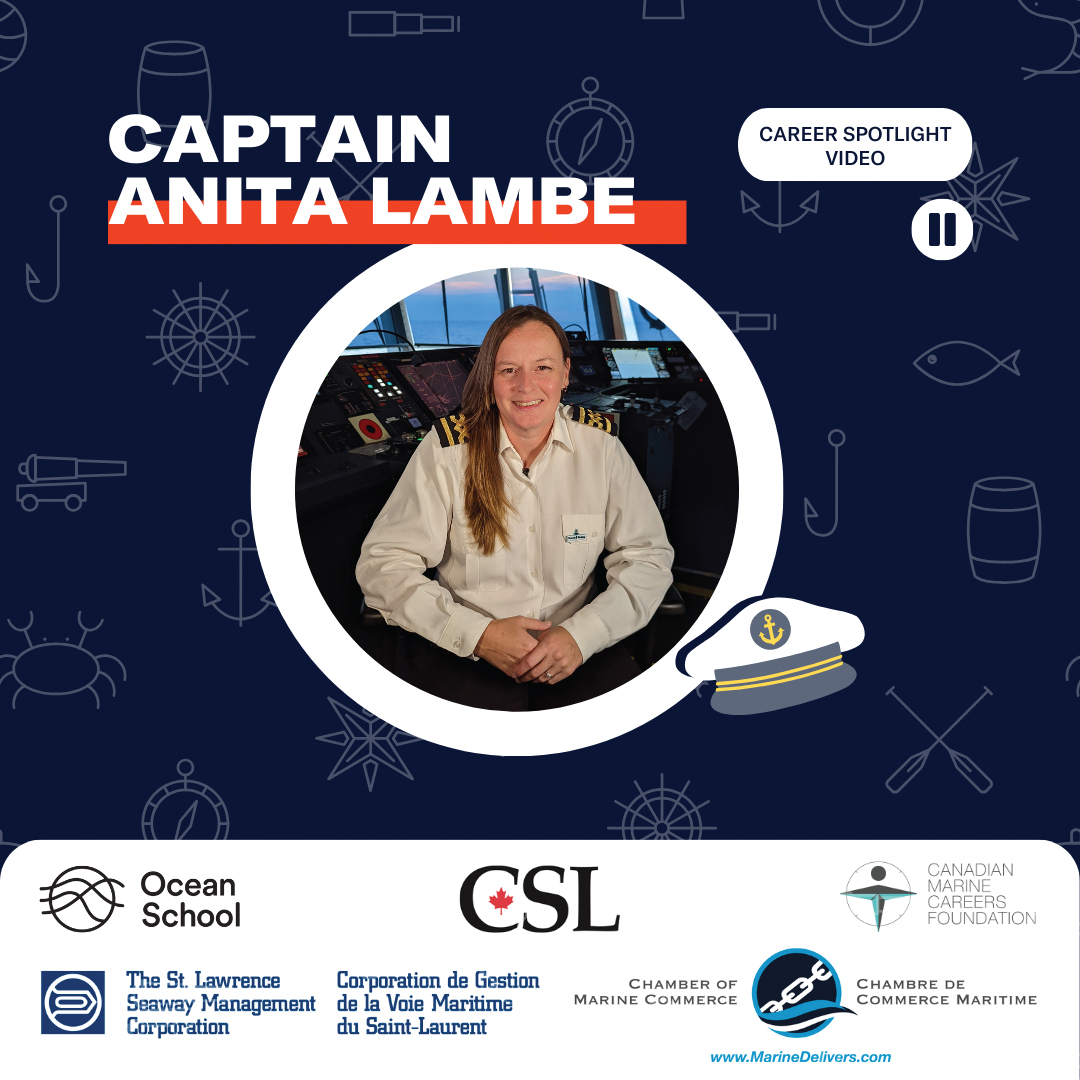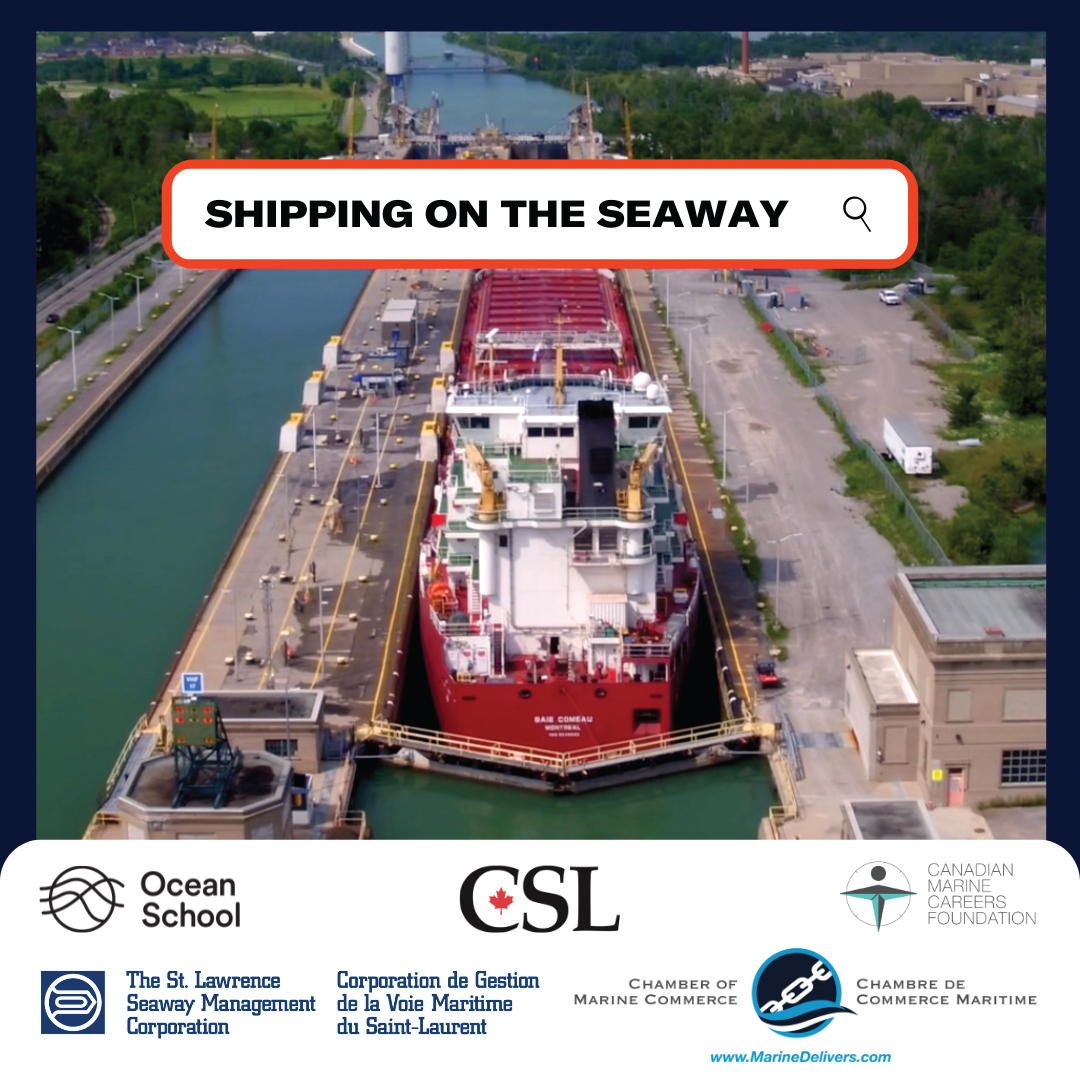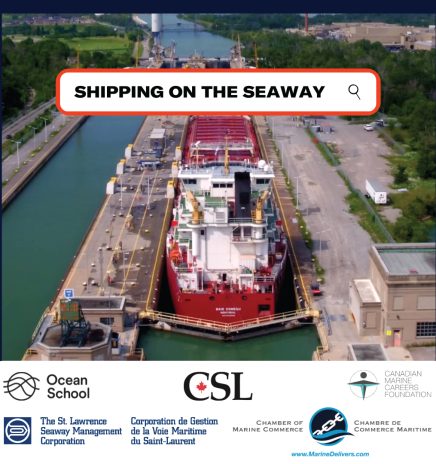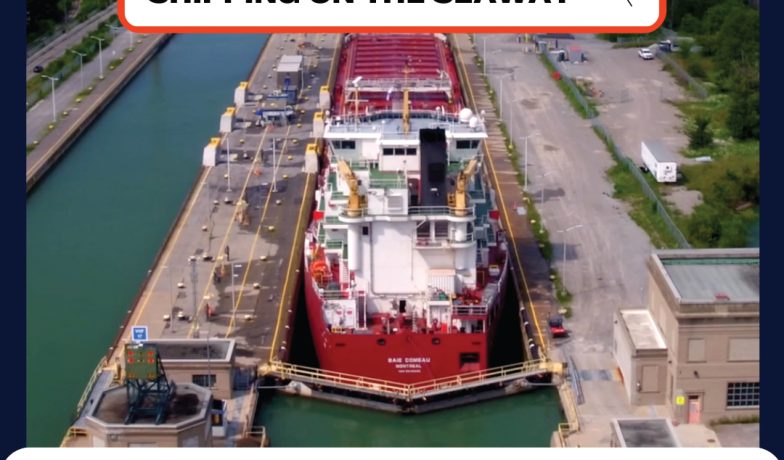New Canadian Maritime Workforce Initiative
Raising Awareness
A new maritime workforce development initiative is turning to virtual reality to increase awareness of the benefits of a career in the maritime industry. Imagine Marine (IM), in conjunction with the Canadian Marine Careers Foundation (CMCF), is utilizing interactive media, a messaging venue, to each young audiences as they consider their futures.

IM’s new outreach uses virtual reality to bring marine careers to life. It’s part of a project from Ocean School, a program within the research-focused Ocean Frontier Institute at Dalhousie University in Halifax, Nova Scotia, and the National Film Board of Canada. Ocean School is a free educational website working to advance environmental awareness and ocean literacy.
Ocean School’s new interactive film/video is titled “Shipping on the Seaway.” Project supporters call the file a “transformative educational experience, designed to ignite curiosity and foster a deeper understanding of maritime transportation among youth
aged 11-17.”
This age group is critical because Canada’s maritime sector faces a big challenge. Forty-three percent of the marine workforce is expected to retire in the next decade, and IM estimates that 19,000 “on-board jobs” alone need to be filled. In comparison, the U.S. Bureau of Labor Statistics estimates that, from 2022 to 2032, 8,800 water transportation workers will be needed each year, mostly to replace retirees or people leaving the maritime sector. For students looking at careers, the maritime sector offers a wide range of high-paying opportunities, from ship captains and seafarers to marine engineers and shoreside professionals. “Shipping on the Seaway” offers a way to almost literally get on board, to get an insider’s look from stem to stern.
How it Works
It starts when a viewer clicks on the video’s title and is immediately transported to the deck of the bulk carrier CSL St.-Laurent. (CSL, based in St. Catharines, Ontario, is one of the industry partners supporting the Ocean School project.) Next, a tour starts, led by the vessel’s chief officer, Francis Lavoie, who walks through the ship, pointing out and describing important places and equipment and how they are used during a workday and voyage.
But a viewer doesn’t just tag along behind Lavoie. Small directional arrows appear within the video. Click on an arrow, and the tour is interrupted. The focus and subject shift – to another part of the ship, to cargo holds, for example, or the crew’s quarters or to the galley to meet the ship’s cook. From navigating locks to exploring the use of biofuels, this bilingual series of videos provides a taste of what life is like working and living on board a 750-foot vessel and and gives viewers a chance to see and think about the diverse career demands required.
Views are panoramic, providing a 360-degree look at the ship’s many sections. Once an aside is complete, viewers just click again, and the chief officer’s tour is easily rejoined. Along the way, new arrows appear, leading to still more sites and descriptions and details about related work.

The hope is that this modern version of an old-school tri-fold brochure will provide the spark for someone deciding on a career move, or maybe just seeking a new job, to get active, to follow up and contact CSL or another company or a training center and eventually board a vessel, start working and start a career.
A Specific Purpose
IM and the Canadian Marine Careers Foundation focus on finding the best ways, especially with new media, to reach out and inform people – particularly younger people – about maritime employment opportunities. Their work draws from and builds on information gleaned from an IM/CMCF 2022 survey of Canadian youth that disclosed that the biggest barrier to recruiting new candidates is a lack of knowledge of the diversity of jobs available in the marine sector. Sixty-seven percent believe the industry is hard to get into, and 60 percent said they can think only of a few types of jobs, rather than the hundreds of skills and crafts required in the industry. Of the overall survey group, 67 percent of respondents were in the millennial and Gen Z generations.
This survey information, combined with projected retirements, led IM and CMCF to start a dynamic, narrative communications campaign targeting students, young adults and other new employment candidates. With “Shipping on the Seaway,” Ocean School adds to CMCF’s focus on these critical demographic sectors.

The new video is just one part of a broader curriculum. Ocean School also has developed a suite of tools and learning resources for educators, including media-based teaching materials, classroom projects and assessment tools designed to integrate marine-focused lessons into various subjects and curriculum.
For example, one set of lessons (for Grade 9+) focuses on building bio-boats and how biofuels can help make shipping more sustainable. Other lessons focus on safety or a chance to join the captain of the CSL St-Laurent for a “day on the job.” The lesson packages include videos, assignments for pupils and references to related subjects, from science and tech to environmental issues.
“Shipping on the Seaway” was funded by an industry partnership that included the Chamber of Marine Commerce, CSL, The St. Lawrence Seaway Management Corporation and the CMCF.
Louis Martel, president and CEO of the CSL Group, which owns the CSL St. Laurent, said he hopes the program inspires young people to join an innovative industry working toward a cleaner and greener future.
Julia Fields, executive director of CMCF, said she believes Ocean School is a great program to encourage exploration of the rewarding and diverse marine career opportunities in Canada.
Continued Efforts
In addition to this new effort, CMCF sees continued potential with strategic partnerships and industry collaboration. For example, CMCF reached 27,000 teachers during one event. CMCF has also established a national job board to link younger audiences, including those in the Sea Cadets or Tall Ships programs, with employers.
CMCF’s workforce development efforts are new, still in the early stages of implementation. To keep a focus on its work, CMCF is participating in a Seafarer Pathway Study, which will provide recommendations, strategies and benchmarks to best focus in on workforce development and recruitment and keep these critical tasks – and critical goals – on target.

New Canadian Maritime Workforce Initiative
Raising Awareness A new maritime workforce development initiative is turning to virtual reality to increase awareness of the benefits of a career in the maritime industry. Imagine Marine (IM), in... Read More

Great Lakes States Receive USDA Forest Service Funding
The Forest Service has awarded $6.28 million in grants to support restoration projects on nonfederal lands in Illinois, Indiana, Michigan, Minnesota, New York, Ohio and Wisconsin. In all, 38 projects... Read More



